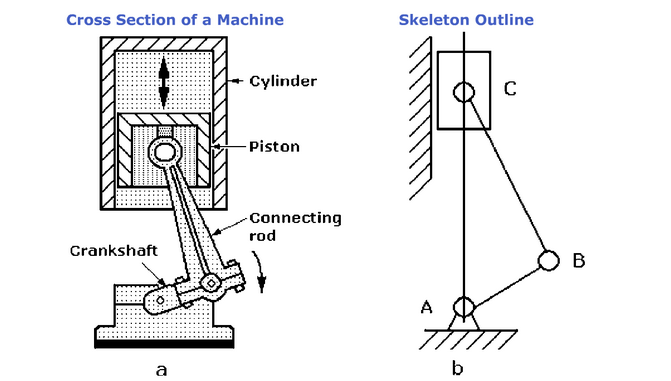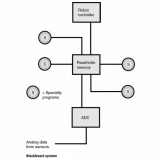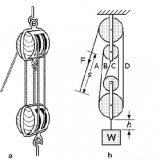Basics of Robotic MECHANISMS – 51003
INTRODUCTION : Machines & Mechanisms
Complex machines from internal combustion engines to helicopters and machine tools contain many mechanisms. However, it might not be as obvious that mechanisms can be found in consumer goods from toys and cameras to computer drives and printers.
In fact, many common hand tools such as scissors, screwdrivers, wrenches, jacks, and hammers are actually true mechanisms. Moreover, the hands and feet, arms, legs, and jaws of humans qualify as functioning mechanisms as do the paws and legs, flippers, wings, and tails of animals.
There is a difference between a machine and a mechanism: All machines transform energy to do work, but only some mechanisms are capable of performing work. The term machinery means an assembly that includes both machines and mechanisms.
Fig. 1: Cross section of a cylinder of an internal combustion engine showing piston reciprocation (a), and the skeleton outline of the linkage mechanism that moves the piston (b).
Figure 1a illustrates a cross section of a machine—an internal combustion engine. The assembly of the piston, connecting rod, and crankshaft is a mechanism, termed a slider-crank mechanism. The basic schematic drawing of that mechanism, Fig. 1b, called a skeleton outline, shows only its fundamental structure without the technical details explaining how it is constructed.
Basics of Robotics Mechanisms
-Inclined Plane
-Pulley Systems
-Screw Systems
-Levers
-Linkages – Simple Planar Linkages
-Physical Principles – Efficiency of Machines & Mechanical Advantage





